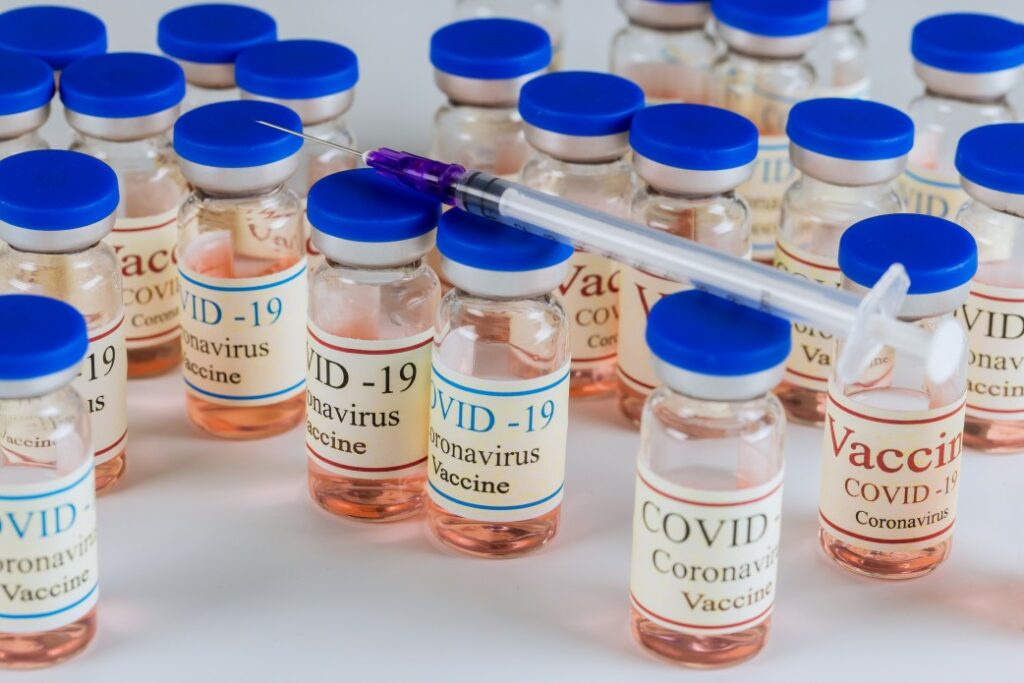
Historically, mass vaccination drives have had their ups and downs. For example, both rollouts of the smallpox vaccine were relatively smooth for their time. But the distribution of the polio vaccine suffered when children began developing polio in their arms (at the injection sites), and African American children lacked access to the vaccine due to a higher percentage of working parents unable to get them to an appointment. By the time the H1NI vaccine came about many years later, the vaccine campaign had already quieted because the disease was ultimately benign.
As we recover from 2020 and navigate the present vaccine push in 2021, COVID-19 vaccination numbers are increasing — along with rising healthcare costs. That said, do you need insurance for the COVID vaccine? According to the Department of Health and Human Services, the COVID vaccine must be administered without out-of-pocket costs, and the federal government is picking up the tab for the tens of millions of vaccine doses Americans are receiving.
How this works varies, though. Participating providers cannot charge Medicare beneficiaries, and providers must waive all copays and coinsurance payments. Providers that participate in Medicare will receive an administrative fee for giving COVID-19 vaccine shots to patients. For people who are privately insured, vaccine registration sites may require a health insurance card to cover the costs. Still, even out-of-network providers should not charge copays. Fortunately, even Medicaid patients and people who are uninsured can receive the vaccine for free due to the CARES Act. These providers are reimbursed through a relief fund.
Does Health Insurance Cover Preventative Care?
Even in light of increasing vaccine access, the pandemic has underscored the importance of health insurance, which almost always covers preventative care services with no additional healthcare expenses. If your plan is subject to current requirements, you may not have to cover a copayment, coinsurance, or deductible to receive some of the recommended preventive health services, such as screenings, vaccinations, and counseling.
Depending on your age, you may have low-to-no cost access to these preventative services:
- Blood pressure, diabetes, and cholesterol tests.
- Many cancer screenings, including mammograms and colonoscopies.
- Counseling on quitting smoking, losing weight, eating healthfully, treating depression, and reducing alcohol use.
- Regular well-child visits, from birth to age 21.
- Routine vaccinations against diseases, such as measles, polio, or meningitis.
- Counseling, screening, and vaccines to ensure healthy pregnancies.
- Flu and pneumonia shots.
To be clear, the preventative services provision only applies to those enrolled in job-related health plans or individual health insurance policies issued after March 23, 2010. If this applies to you, this provision applies as soon as your plan begins its first new “plan year” or “policy year” on or after September 23, 2010. Check your health plan’s website to learn more about what’s covered and which healthcare expenses you may have to pay out of pocket.
Forecasting Post-COVID-19 Vaccine Coverage and Healthcare Expenses
Typically, you need to provide proof of health insurance to receive a vaccine at no cost. But coverage of the COVID-19 vaccine currently differs from other typical treatments and medications, thanks to the federal government’s Provider Relief Fund — regardless of health insurance status or how much vaccines usually cost out of pocket.
But what will vaccine coverage look like when the world returns to “normal?” Based on what we know now, here are some predictions:
1. Vaccines will fall under regular preventative care rules.
Once the pandemic subsides and COVID-19 vaccines are fully licensed and part of preventative care, they will fall under the same reimbursement rules as other vaccines. Under the Affordable Care Act (ACA) of 2010, health plans must cover routine immunizations as a preventative service with no extra costs to patients.
Unfortunately, the ACA does not govern short-term health plans. These plans may require patients to share the cost of the COVID-19 vaccine or not cover it at all.
2. There will be more administration fees.
As life starts to resemble a “normal” rhythm, providers will likely charge an administration fee for giving the shot to a patient. This time, however, the federal government probably won’t pick up the costs. Instead, patients who opt to get the vaccine will be expected to cover the fee.
3. Vaccine costs may rise.
Because we are still in the middle of a pandemic and global health crisis, the COVID-19 vaccine is free, but it’s possible the big vaccine producers — Johnson & Johnson, Moderna, and Pfizer — will raise their vaccine costs at some point. In fact, they have already quietly touted plans to raise coronavirus vaccine prices.
As the world opens up, these price increases will most likely start to look more like other vaccine billing practices, similar to those for the flu shot. This means private insurance will cover the cost of the vaccine instead of passing it along to the federal government.
4. Health insurance costs may increase.
If the prices of COVID-19 vaccines increase with the addition of administration fees and private insurance footing the bill, we will likely also see an uptick in healthcare expenses. Projected rate changes for 2021 were moderate, but some health insurance companies implemented rate increases of about 25%. Still, time will tell whether health insurance premiums show significant changes.
While the federal government is currently striving to make the COVID-19 vaccine accessible with no additional costs, it’s far more likely that health insurance plans will cover the vaccine in the future. The return to normalcy emphasizes the importance of healthcare access after the pandemic — not just during it.
Take the time to learn about your options for when the vaccine is no longer administered for emergency use, which should put you in a good position regardless of any future changes.













